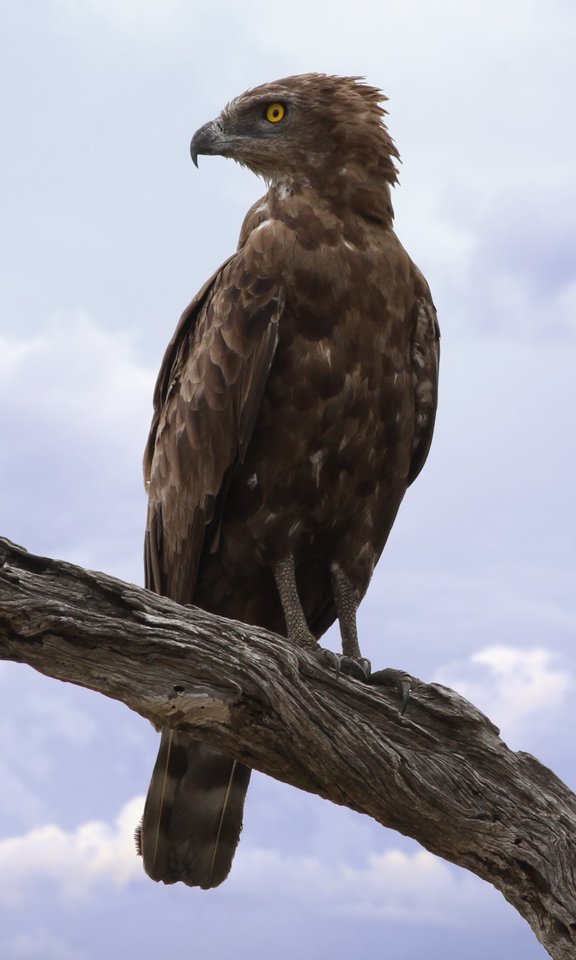Brown snake eagles (Circaetus cinereus) are a fascinating species of raptor found in sub-Saharan Africa. These majestic birds are known for their unique hunting behavior and their ability to soar gracefully through the skies. In this comprehensive blog post, we’ll explore the details of when brown snake eagles take flight and the factors that influence their aerial activities.
When Do Brown Snake Eagles Fly?
Brown snake eagles are primarily diurnal, meaning they are active during the day. These birds typically take to the skies in the early morning hours and late afternoon, taking advantage of the thermal updrafts that help them conserve energy while hunting.
The timing of their flights is closely tied to the availability of their primary prey – snakes. Brown snake eagles are specialized hunters, focusing on a variety of snake species, including venomous ones like cobras and puff adders. As the sun warms the ground, snakes become more active and emerge from their hiding places, making them more vulnerable to the eagle’s keen eyesight and hunting skills.
Factors Influencing Brown Snake Eagle Flight Patterns
 Image source: Brown snake eagle By Derek Keats
Image source: Brown snake eagle By Derek Keats
Several environmental and behavioral factors can influence when brown snake eagles take flight and how they move through the air. Let’s explore some of the key factors:
1. Prey Availability
As mentioned earlier, the presence and activity of snakes are the primary drivers of brown snake eagle flight patterns. When snake populations are abundant and active, the eagles will be more likely to take to the skies in search of their next meal.
2. Weather Conditions
Brown snake eagles are adept at using thermal updrafts to soar and conserve energy during their flights. On days with clear skies and strong winds, these birds can often be seen effortlessly gliding and circling high above the ground, taking advantage of the favorable conditions.
3. Breeding and Nesting Behavior
During the breeding season, brown snake eagles become more territorial and active in their nesting areas. The male birds may engage in elaborate aerial displays to attract mates, while both parents take turns hunting and bringing food back to the nest to feed their young.
4. Habitat and Landscape
The specific habitat and landscape features of an area can also influence when brown snake eagles take flight. These birds prefer to nest in tall trees or on electricity pylons, and they often perch in exposed locations to scan for prey. The availability of suitable nesting sites and hunting grounds can affect the timing and frequency of their flights.
Observing Brown Snake Eagle Flights
Birdwatchers and nature enthusiasts can increase their chances of spotting brown snake eagles in flight by understanding their typical flight patterns and behaviors. Here are some tips:
- Time of Day: Visit areas known to be home to brown snake eagles in the early morning or late afternoon, when these birds are most active.
- Vantage Points: Seek out elevated locations, such as hilltops or towers, that provide a clear view of the surrounding landscape, where you’re more likely to spot the eagles soaring overhead.
- Habitat Preferences: Focus your observations in dry woodlands, thorn savannas, and broad-leafed savannas, as these are the preferred habitats for brown snake eagles.
- Patience and Persistence: Brown snake eagles can be elusive, so be prepared to spend time scanning the skies and waiting patiently for these majestic birds to make an appearance.
By understanding the factors that influence when brown snake eagles take flight and following these observation tips, you’ll increase your chances of witnessing the graceful aerial displays of these remarkable raptors.
Conclusion
Brown snake eagles are a captivating species that play a vital role in the ecosystems of sub-Saharan Africa. Their unique hunting behavior and ability to soar effortlessly through the skies make them a true wonder of nature. By learning about when these birds take flight and the factors that shape their aerial activities, we can better appreciate and protect these remarkable creatures and their habitats.
References:
- The Peregrine Fund. (2021, August 16). Brown Snake-eagle | The Peregrine Fund. Retrieved April 19, 2024, from https://peregrinefund.org/explore-raptors-species/eagles/brown-snake-eagle
- BirdNote. (2017, December 4). Snake-eagles Are a Serpent’s Worst Nightmare | Audubon. Retrieved April 19, 2024, from https://www.audubon.org/news/snake-eagles-are-serpents-worst-nightmare
- Ken Newman. (n.d.). Snake Eagles, Birding Raptor Guide Kruger Park Birding. Retrieved April 19, 2024, from https://birding.krugerpark.co.za/birding-in-kruger-snake-eagles.html

